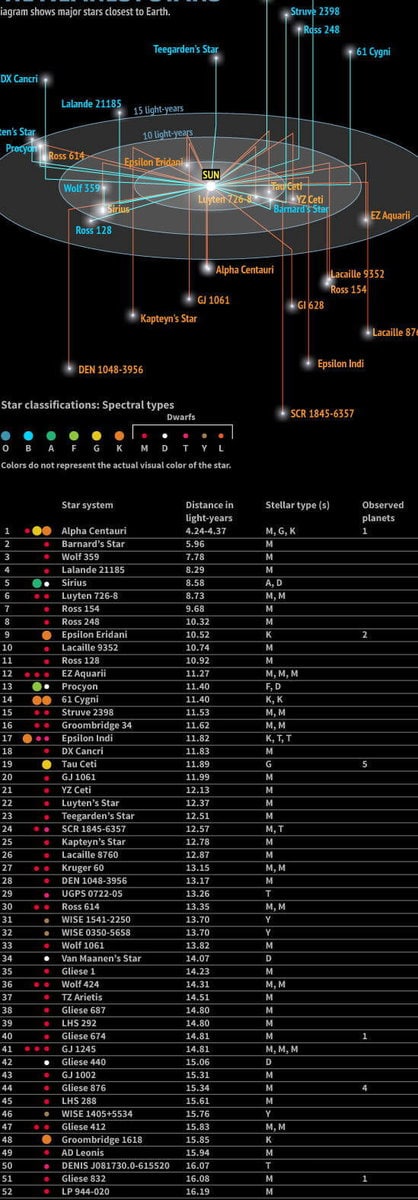
There is often a question about the star that is closest to Earth. Undoubtedly, the Sun is the nearest star to us. Furthermore, it serves as the primary source of light and heat around which our planet revolves.
Presently, it is established that the distance to the Sun is 149.6 million kilometers. Incidentally, this distance, when rounded up to 150 million kilometers, is considered as one astronomical unit.
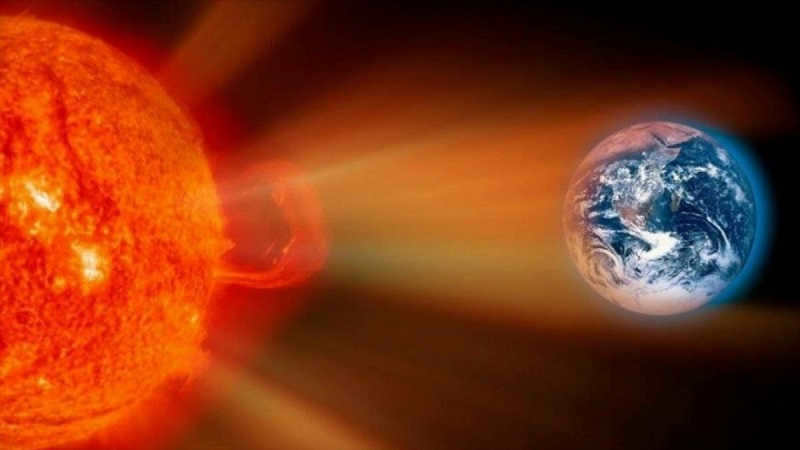
What is the name of the nearest star to the Earth?
Actually, the question above can be restated as: what is the name of the star that is closest to the Solar System and the Sun? This star happens to be our closest stellar neighbor.
Alpha Centauri comes next in line in terms of proximity. It is located 4.37 light-years away.
However, the situation is not as straightforward as it may seem. Alpha Centauri is actually a binary star system consisting of two main components, A and B. These components orbit around a common center of mass. As a result of this orbital motion, their distance from the Earth fluctuates. Consequently, they alternately become closer and farther away from us.
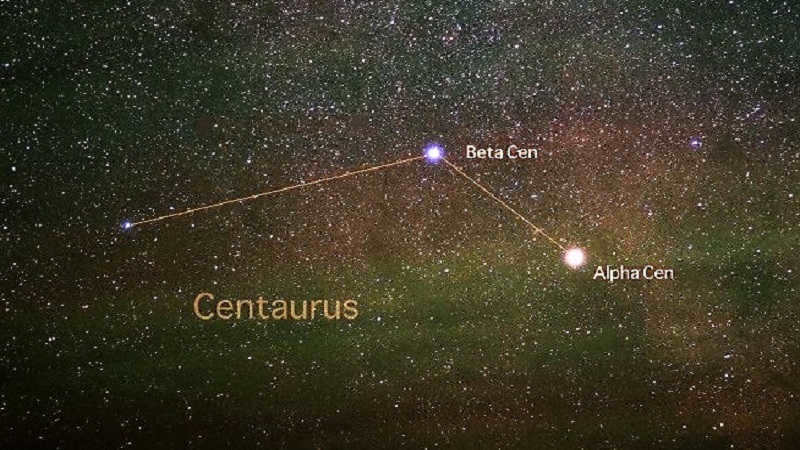
Additionally, Alpha Centauri is accompanied by a third component, which is positioned separately from the primary stars. Currently, this particular star is the nearest celestial body to our planet.
Hence, the closest star to Earth is known as Proxima Centauri.
Proxima Centauri is classified as a red dwarf. It too orbits around a shared center of mass, but due to its distant location, it requires approximately 500,000 years to complete a full orbit. This implies that in roughly 1,000 years, it will gradually move further away from the Sun. Consequently, Alpha Centauri (A and B) will become the nearest star to our planet.
According to scientific investigations, the distance between us and Proxima is approximately 4.244 light-years. This distance is more than 270 thousand times greater than the distance between the Earth and the Sun!
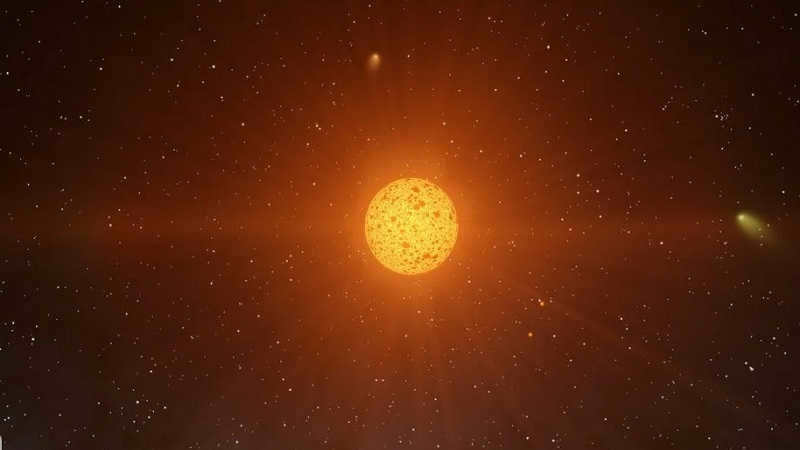
What is the distance to the closest star?
Using the parallax method, astronomers have been able to calculate the number of light years it takes to reach the nearest star. As mentioned before, it is located approximately 4.244 light years away.
Unfortunately, space travel is currently only a dream for humans. However, in the future, we may be able to explore outer space just as we do the sky above us. For now, though, it requires a lot of work, research, development of specialized equipment, and more. Nevertheless, the vast and mysterious expanses of the Universe continue to entice us.
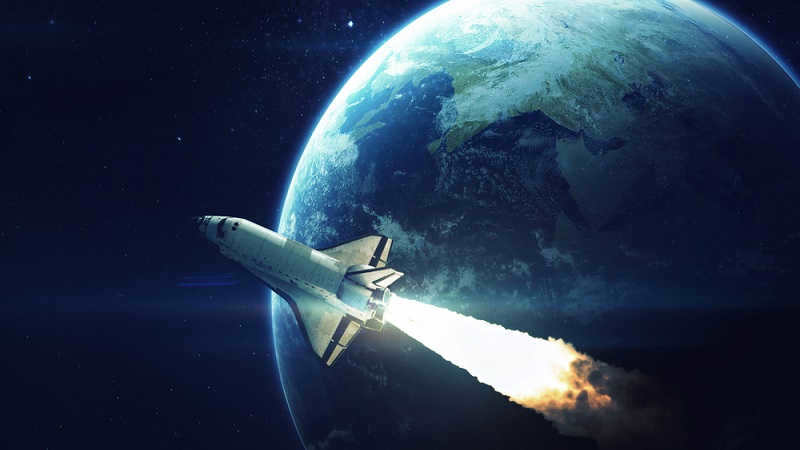
Imagine if we were able to travel directly to Proxima Centauri at a speed of 100 kilometers per hour. It would take us nearly 50 million years to complete such a journey, which is clearly impossible.
Currently, scientists have only been able to calculate the amount of time it would take for light to travel to the nearest star. It has been determined that the distance to Proxima Centauri is approximately 4.2 light-years.
However, within the solar system, there exist additional stars that are in close proximity.
Consequently, the stars that are nearest include:
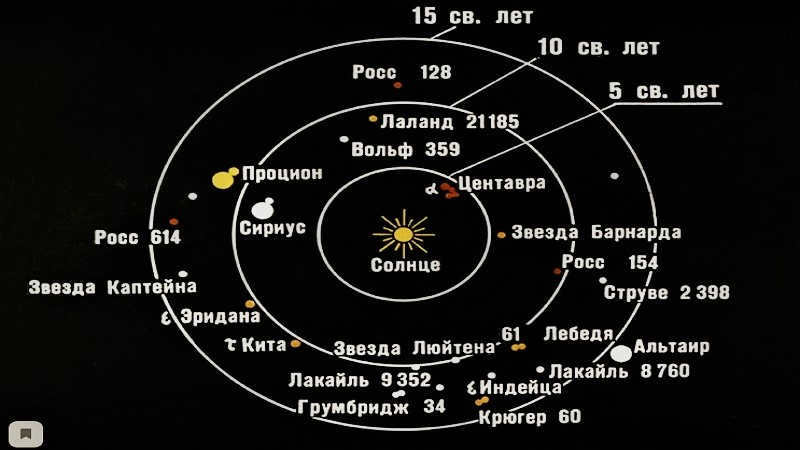
Actually, it is quite challenging for humans to comprehend the vast distances between the Earth and the stars and other celestial bodies.
Undoubtedly, we have acquired a vast amount of knowledge about the structure of the Universe, although not all of it. Nevertheless, our understanding is already sufficient to calculate the distances to various objects.
As we all know, the Sun is the closest star to the Earth. It is closely followed by Proxima Centauri, which will soon be surpassed by Alpha Centauri. In the course of thousands of years, the celestial map of the sky will likely undergo changes, as everything in the universe is in motion. It is even possible that another star will become closer to us.
For thousands of years, humanity has been looking up at the sky, attempting to comprehend and fathom the vastness of our universe. Our progress has advanced to the point where not only do we observe celestial bodies from our planet Earth, but we also venture into the cosmic void. Generations have pondered the question – how long does it take to reach the nearest star? In this article, we will present a thorough examination of this inquiry, drawing upon the latest scientific breakthroughs.
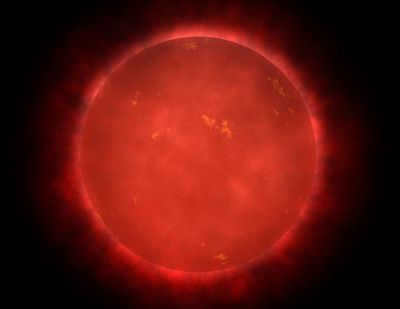
Background Information
In 1915, a talented astronomer named Robert Innes made a remarkable discovery – he found a star that happens to be the closest to our own sun. This star was named Proxima Centauri. Proxima Centauri is quite small compared to the Sun, with a diameter that is less than 7 times smaller and it emits only 0.17 percent of the Sun’s light. The distance between our sun and Proxima Centauri is just over 4 light years, which may seem insignificant on a cosmic scale but it is still an immense gap for humanity.
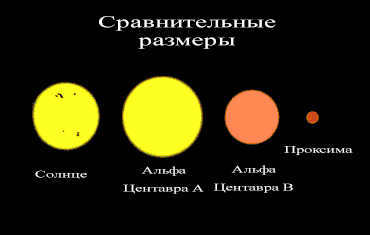
Advanced Technology
However, in the present era, humanity has yet to master the art of traversing the vastness of space at the speed of light. Therefore, let us delve into the question of how long it would take us to journey to Proxima Centauri with our current fleet of vehicles. Currently, the Helios 2 automatic spacecraft holds the title for being the fastest, capable of reaching speeds of up to 253 thousand kilometers per hour (a fraction of the speed of light). Upon conducting a brief calculation, we can deduce that the journey would span over 18 thousand kilometers. years, assuming that the engines are continuously fueled for the entire duration. However, our current technological capabilities only allow for sufficient fuel to sustain the voyage for 50 years. In order to reach our nearest neighboring star, mankind must overcome numerous complex technological obstacles.
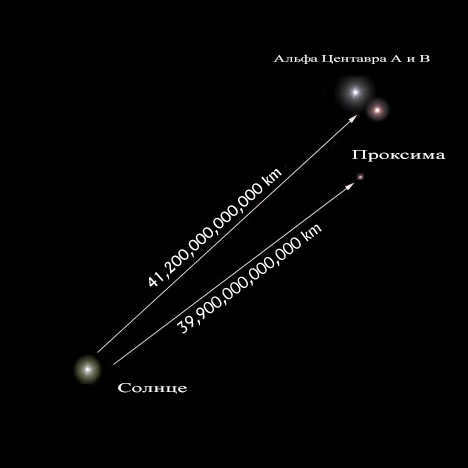
An insight into the future
Nevertheless, let’s take a glimpse into the future and explore potential solutions that could theoretically enable long-term space travel. In order to sustain a flight for 18,000 years, an enormous amount of fuel is required – billions of cubic meters of liquid. The logistics of delivering such massive volumes into orbit is an incredibly complex task, not to mention the construction of a spaceship of colossal proportions. However, there is an alternative approach to fuel consumption.
It has been determined that a mere 17 grams of antimatter can provide enough energy for 18 thousand years of flight! This means that energy concerns are immediately resolved and there is no need to construct a massive spacecraft. Currently, the production of antimatter is an intricate and intricate process. With the current global economic situation, obtaining 17 grams of this substance would cost approximately 180 trillion dollars, a sum that is beyond the means of any single country or even all countries combined. However, there is a silver lining. The process of creating antimatter improves every year, making it more efficient and affordable. It is possible that in 100 years, antimatter energy will become as commonplace as nuclear energy.
If scientists choose this method of developing space travel, they will face a challenging task of mastering the containment and storage of antimatter. This is because just 1 gram of antimatter possesses an energy that surpasses the magnitude of the Hiroshima bomb explosion!
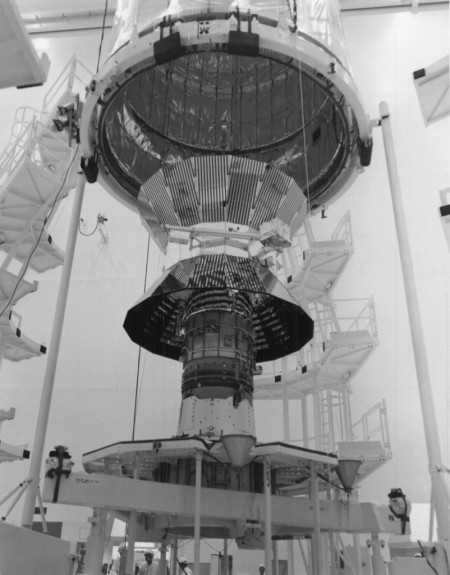
Fascinating fact
There is a great deal of curiosity surrounding the question of how long it would take to travel to the nearest star by airplane. While it is not possible for an airplane to fly in space due to the lack of atmosphere, it is theoretically estimated that it would take approximately 1.5 million years to cover the distance from the Sun to Proxima Centauri. When it comes to other modes of transportation, the time frame expands to hundreds of millions and even billions of years!
A captivating video about this topic:
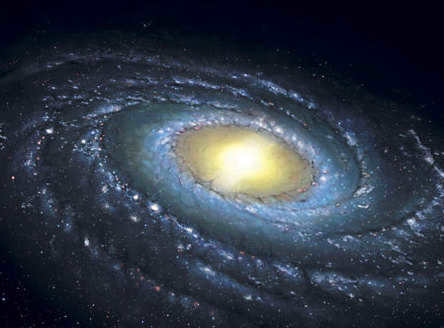
If you have read our previous article on the cost of interstellar travel, you will have realized just how challenging it is to travel to the nearest star. However, the idea of traveling to a neighboring galaxy seems almost unfathomable with our current technology. Even with the most advanced engines, it is impossible to exceed the speed of light, as dictated by the laws of classical physics. So, let’s delve into the immense distance that separates our galaxy from its nearest neighbor to truly grasp the magnitude of this hypothetical journey.
Distances to the nearest galaxies
We reside in a galaxy known as the Milky Way, characterized by its spiral structure and housing an estimated 400 billion stars. The span of this galaxy, from one end to the other, measures approximately one hundred thousand light-years. Located closest to our galaxy is the Andromeda galaxy, which also possesses a spiral structure but is more massive, boasting around one trillion stars. These two galaxies are gradually drawing nearer to each other, moving at a velocity of 100-150 kilometers per second. In approximately four billion years, they will merge together, forming a singular entity. If humans still inhabit Earth at that time, they will likely not observe any significant changes, aside from the gradual shift in the appearance of the celestial sky. The vast distances between stars greatly diminish the likelihood of collisions occurring.
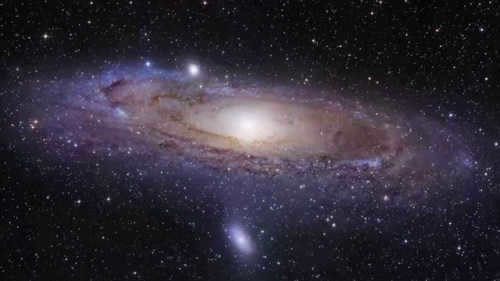
The Andromeda galaxy, which is the closest galaxy to us, is located approximately 2.5 million light years away. This means that it takes around 2.5 million years for light from the Andromeda galaxy to travel to the outer reaches of the Milky Way galaxy.
In addition to the Andromeda galaxy, there is also a smaller galaxy known as the Large Magellanic Cloud. This mini-galaxy is gradually decreasing in size and is not on a collision course with our galaxy, the Milky Way. The distance to the Large Magellanic Cloud is approximately 163 thousand light years.
While the Andromeda galaxy is technically the closest galaxy to us, scientists often refer to it as the closest galaxy due to its size and proximity.
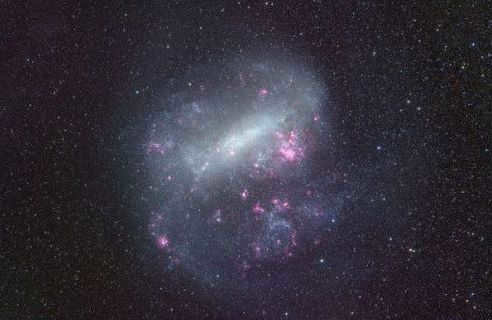
To travel to Andromeda using the currently fastest and most advanced spacecraft would require a staggering 46 billion years! A more feasible option would be to wait for Andromeda to collide with the Milky Way in a mere 4 billion years.
The Limitations of Speed
This article highlights the immense challenge of traversing the vast distances between galaxies. Even light itself struggles to reach the nearest galaxy, illustrating the vastness of intergalactic space. As humanity continues to explore outer space, we must seek alternative means of propulsion beyond traditional fuel-powered engines. Advancements in high-speed engines will greatly enhance our ability to explore our solar system, allowing us to not only set foot on Mars but also venture to other intriguing destinations such as Titan, Saturn’s satellite, which has long fascinated scientists.
Possibly, with advancements in spacecraft technology, individuals may have the capability to journey to Proxima Centauri – the closest star to our own. Furthermore, if humanity can attain the speed of light, it may become feasible to reach nearby stars within a matter of years, rather than millennia. However, when it comes to intergalactic travel, alternative methods of traversing space need to be explored.
Possible Solutions for Overcoming Vast Distances
For a long time, scientists have been grappling with the enigmatic phenomenon known as “black holes” – enormous entities with such immense gravity that not even light can escape their grasp. It is theorized that the supergravitational forces within these “holes” could potentially rupture the very fabric of space, opening up pathways to other destinations within our vast universe. However, the method of traversing through black holes presents certain drawbacks, with the primary concern being the lack of control over the journey. In other words, travelers aboard a spacecraft would have no say in determining their desired destination within the cosmos; instead, they would be at the mercy of the hole’s whims.
Moreover, a trip of this nature has the potential to become unidirectional due to the possibility of the wormhole collapsing or altering its characteristics. Additionally, the immense gravitational forces associated with the wormhole can impact both space and time, leading to the collapse or transformation of the wormhole itself. Notably, astronauts embarking on such a journey would experience time passing normally, effectively propelling them into the future. However, on Earth, years or even centuries could transpire before their eventual return, exemplifying the thought-provoking paradox illustrated in the recent film “Interstellar”.
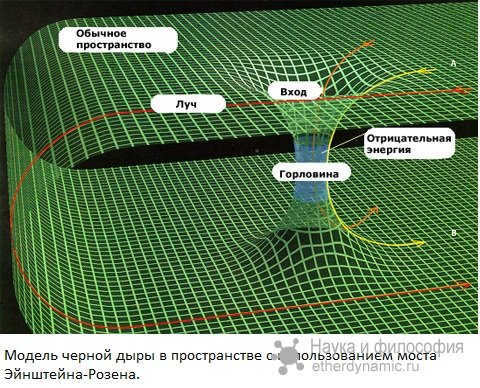
Scientists involved in the field of quantum mechanics have made an intriguing discovery. It appears that the speed of light is not the ultimate limit of movement in the Universe. At the microscopic level, there exist particles that briefly manifest themselves in one point of space before vanishing and reappearing in another. For these particles, distance is insignificant.
The concept of “string theory” suggests that our world has a multidimensional structure, with 11 dimensions. By understanding the principles behind this theory, we may be able to traverse any distance. Instead of needing to physically fly or accelerate, a spaceship could remain stationary and utilize a gravitational generator to manipulate space, effectively reaching any point in the universe.
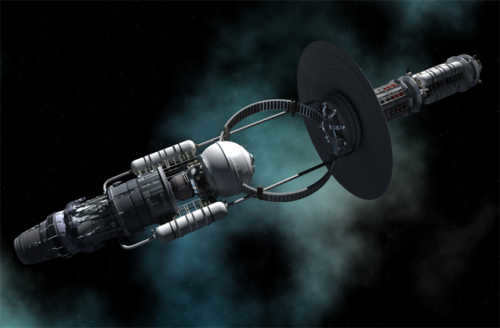
The potential of scientific advancement
Greater focus should be placed on the microscopic realm within the scientific community, as it could potentially hold the key to unlocking the secrets of rapid interstellar travel. Without groundbreaking discoveries in this field, mankind will remain unable to traverse vast cosmic distances. A significant tool in this research is the Large Hadron Collider, which serves as a powerful accelerator for particles and aids scientists in comprehending the realm of elementary particles.
We trust that in this article we have provided a comprehensive account of the proximity to the closest galaxy. We are confident that humanity will eventually acquire the ability to traverse the vast distances spanning millions of light years, potentially leading to an encounter with our fellow sentient beings. However, the author of this passage holds the belief that this eventuality will materialize sooner rather than later. The significance and implications of an encounter with extraterrestrial civilizations warrant an entire separate discourse, constituting what one might call “a tale unto itself”.
It’s incredibly fascinating:
We’ve previously released a detailed analysis of the film through the eyes of Maria Kuporova, an aerospace engineer. Now, we invite you to explore the physics-related aspects of the movie from the perspective of George Tims, the author behind the project "Physics for Humanities". Get ready for an exhilarating ride!
What is the duration of a flight to the nearest star?
During a conversation with a professor in the opening scene of the film, Cooper mentions that it would take over 1,000 years to travel to the closest star, which is not logical. Alpha Centauri is one of the star systems closest to Earth, and it is approximately 40 trillion kilometers away. Interestingly, NASA is currently working on a project involving the deployment of microprobes to this star system. These probes are expected to reach a speed of 1/10 the speed of light, allowing them to reach Alpha Centauri in just 44 years! Comparatively, the fastest spacecraft currently in existence, the Helios probe, would require 18,000 years to make the same journey.
Initially, the main character showcases an extensive understanding of moleholes, but as the movie progresses, this expertise mysteriously vanishes. He astutely observes that moleholes do not spontaneously form, and many physicists concur that these intricate and extraordinary entities cannot naturally emerge in the universe, much like stars and galaxies.
A molehole is a theoretical construct of space-time that enables a considerably abbreviated route between two points.
An image from the film. Source: kinopoisk.ru
The movie is set in 2067, and the plot reveals that the “wormhole” was discovered 48 years ago, in 2019. However, as of 2023, we have not yet observed anything similar near Saturn. It is rather puzzling that such an intriguing celestial object has received little attention over the years. Despite the discovery of gravitational waves from a black hole, there has only been one expedition to explore the wormhole, and that was for colonization purposes. Moreover, it is interesting to note the professor’s confident assertion that the wormhole leads to another galaxy within our Universe. There are models of “wormholes” that suggest traveling to another universe is possible, and distinguishing between remote parts of our world and an alien world would certainly be challenging.
Mars is actually closer than we think, while Saturn is significantly farther away
In one of the episodes, Cooper requests his robot companion to provide the route details for their journey. The robot responds by stating that it would take approximately eight months to reach Mars, and only 14 months to reach Saturn. However, in reality, Mars can be reached in just six months (under ideal circumstances according to calculations by NASA), whereas the limitations of chemical rocket engines prevent us from reaching Saturn quickly – it would take more than three years and two months to arrive there (as demonstrated by the Cassini spacecraft, which completed five gravitational maneuvers to adjust its trajectory and velocity using the gravitational fields of celestial bodies). Humans are constrained by the duration of the flight, as achieving the necessary velocity through gravitational maneuvers takes significantly longer.
A still from the movie. Source: kinomania.ru
Who caused the distortion of space? Is the wormhole a hole or a sphere?
Therefore, when traveling through the “wormhole,” Cooper loses his understanding of it. Romilly must clarify to him that it appears as a sphere rather than a hole due to the curvature of space.
However, has anyone truly manipulated our space in a manner akin to folding a piece of paper? And can the sole explanation for the depicted wormhole be as straightforward as it seems? Within the film, they propose that it is a form of hyperspace, possessing five dimensions (whereas our own space contains four). At present, there exist three prevailing models of such “wormholes”, with only two of them being considered hyperspace. The Einstein-Rosen bridge necessitates traversing a wormhole at a speed surpassing that of light, while also bypassing two singularities, a rather perilous endeavor. The Morrison-Thorne model, on the other hand, calls for an additional six dimensions and postulates the presence of exotic matter, which has yet to be discovered and is solely predicted by the general theory of relativity, requiring a negative energy density. Roman Konoply’s model incorporates mathematical concepts rooted in hyperspace, involving a staggering total of 26 dimensions.
A still frame from the film. Source: kinorium.com
At the moment when the heroes enter the “wormhole”, the ship experiences a jolt, they lose command, everyone prepares to bid farewell to their home galaxy (once again, why not the Universe?), but a multitude of inquiries arise. Firstly, how is it possible for three-dimensional objects to venture into hyperspace? It is essential to recognize that they are “traversing” along a surface with an equal number of dimensions, rather than delving into multidimensional space. Secondly, why did they relinquish command of the ship? How does this circumstance differ from standard gravity? And thirdly, why are they descending as if through a tunnel? After all, we have previously been shown and substantiated that it is a sphere, so they should have observed concentric spheres with varying radii through the portholes.
Neutron star or black hole? Journeying to the planet Miller
While approaching the planet Miller, Cooper proposes a gravitational maneuver – circumnavigating a neutron star. This strategy would enable them to decelerate because they will already be accelerating near the black hole due to its immensely powerful gravity, which might cause them to simply bypass the planet. Their objective is to maintain a stable orbit where the gravitational pull of the black hole is counteracted by the centrifugal force. However, a neutron star is entirely unsuitable for such purposes – no objects other than black holes can operate at such high velocities (about one-fourth to one-half the speed of light). To be more precise, there should be a smaller black hole adjacent to Gargantua’s supermassive black hole, which would assist them in executing the maneuver.
A still from the movie. Source: kinopoisk.ru
The Truth Behind Illuminator
Astonishing scenes unfold in the movie as we peer through the porthole, revealing the spherical planet Miller alongside a colossal black hole. However, this depiction is not entirely accurate. If we were to hypothetically position another smaller black hole near Gargantua to execute a gravitational maneuver, we would witness some image overlap. Additionally, the planet itself would not maintain a perfectly spherical shape, but rather become elongated due to the immense gravitational pull exerted by the neighboring black hole. Furthermore, the angular size of Gargantua would be reduced by at least three times.
Presented here is a still from the film, obtained from mirf.ru
The black hole is not as dark as previously thought
In the movie, Romilly states that nothing escapes from a black hole. However, the quantum foam in our universe generates pairs of virtual particle-antiparticle, which are essentially weightless and have no physical properties, making them impossible to detect. However, when these particles come close to the event horizon of a black hole, they become real as the antiparticles are absorbed by the black hole while the particles are released as Hawking radiation. The energy released during this process is immense due to the strong gravitational forces, and there is a possibility that we could detect these particles on Earth through specialized methods.
Additionally, gravitational waves are emitted from black holes with such intensity that they have been able to locate both the “wormhole” and the black hole itself.
Are radio waves capable of time travel?
Upon arriving on Dr. Miller’s planet, the protagonists discovered that her spacecraft had crashed, and there was a possibility that the scientist herself had perished just moments ago due to the time differential with Earth. The signal they received on Earth a few years prior (even though they had not yet departed) served as further confirmation of a successful landing. However, is it feasible for the signal to have traveled back in time in this manner? No, as it would have left the planet exactly when the heroes arrived, aligning with Dr. Miller’s recent landing less than an hour ago. In a narrative like this, it is simple to breach causality: they were receiving a signal on Earth before she even touched down on the planet. It would have been logical to receive a signal from Miller as they approached.
A still captured from the film. Source: kinomania.ru
Nolan’s Time Machine
The theory of the professor
On the planet Mann, the protagonists uncover the professor’s treachery. Supposedly, he neglected the study of quantum gravitational theory and focused solely on gravitational anomalies. However, it would have been futile to investigate these phenomena without a comprehension of the quantum processes of gravitation. In our reality, he might have delved into string theory or some other field in order to explore the subject matter further. If he had managed to devise a coherent concept, there would have been no need to journey to a black hole for quantum data. Nonetheless, we can bolster the original storyline by positing that the quantum numbers for the gauge fields in this theory, whose quanta reside within the black hole, would have been indispensable. Additionally, Mann asserts that it is impossible to generate a singularity on Earth without data from the black hole. However, scientists have proposed several notions in the form of physical models of singularity through electromagnetic or acoustic phenomena, as well as the generation of Planckian black holes in colliders.
A screenshot from the film. Source: kinomania.ru
An ancient gentle singularity?
Romilly discusses Gargantua’s nature as an ancient gentle singularity, and it could be conceivable to dispatch a robot to gather information there. Nonetheless, transmitting data is impossible due to the presence of the event horizon, and furthermore, this definition of a black hole is fundamentally flawed. Within any black hole, there exist one hard singularity (breaking down all particles into quarks and beyond) and two gentle singularities – one falling and one flying. An object entering the black hole will be compressed between these two gentle singularities, and theoretically, it could remain intact because the density is high but not infinite. Both singularities are formed through temporal compression. However, it is advisable not to experiment with this, as these conditions are among the most extreme in the universe.
“In order to overcome gravity, one must release ballast – according to Newton’s second law.” Is it the second law? No, it’s actually the third law! And it doesn’t sound exactly like that, but rather, “The greater the mass of an object, the more difficult it is to change its velocity.” And this brings us to Tsiolkovsky’s equation: by shedding fuel mass, you can increase your speed – the principle of jet propulsion.
Can one actually escape from a black hole?
As Cooper gazes upon the darkness surrounding the black hole beneath the ship, he witnesses a spectacle of intense energy. The matter in the accretion disk, brought together by powerful gravitational forces, undergoes nuclear fusion reactions, resulting in a searing inferno. In this extreme environment, the ship and Cooper himself would, in theory, disintegrate into plasma due to the unfathomable temperatures, reaching hundreds of millions of degrees, far surpassing even the sun’s scorching heat of 5000 degrees. However, the story’s creator postulates the existence of a thin, smooth disk encircling the black hole, where matter is scarce and temperatures are akin to those of the sun. It is important to note that the ship’s movement generates an electromagnetic field, akin to a formidable cannon emitting X-ray radiation. To shield themselves from this radiation and the blistering temperatures, the ship would require a robust “umbrella” capable of absorbing the impact.
A still from the movie. Source: kinomania.ru
Descending into the event horizon
Cooper witnesses an extraordinary sight as he watches a section of the spaceship disappear into the abyss beyond the event horizon. However, he would not have been able to perceive this directly. Instead, he would have seen an endless array of secondary images, including reflections of himself from different angles, as well as radiation and particles with immense density and energy. There would be no darkness, but he would also be devoid of any sensation of gravity. Furthermore, any attempt to communicate with Brendt in real-time would be futile, as his voice would take millions or even billions of years to reach her. Meanwhile, snowflakes are seen floating by the porthole, a phenomenon caused by particles passing through the camera’s sensor in space and illuminating it. Remarkably, Cooper is not viewing this spectacle through a camera lens. When astronauts are in flight, they often perceive streaks of blue light in their vision.
Hypercube
While being pulled towards a singularity, the protagonist discovered themselves trapped within a hypercube, also known as a tesseract. It is worth noting that prior to this encounter, humanity had never witnessed such enigmatic structures, let alone encountered four-dimensional objects with a cubic form. Adding to the intrigue is the fact that the creators of this spatial anomaly, supposedly designed to aid humanity, opted to situate it at the very heart of a black hole. One cannot help but wonder why they did not place it closer to Earth.
An image taken from the film. Source: kinorium.com
The organization of space inside is highly intricate, with time flowing through tunnels, and Cooper had to select a diagonal trajectory to navigate between different time segments. No scientist has ever conceived of such concepts; the entire tesseract storyline is purely magical. It is highly unlikely that Cooper would have survived in close proximity to the Gargantua singularity, as he would have been torn apart into particles. The only way to interpret this plot twist is that the main character experienced a vision of his daughter before his demise in the formidable singularity.
Be sure to follow the project’s social media accounts, where upcoming lectures for all science fiction enthusiasts will be announced!
Science Editor: George TIMS
On the cover: a still image from the film. Source: smartfacts.ru
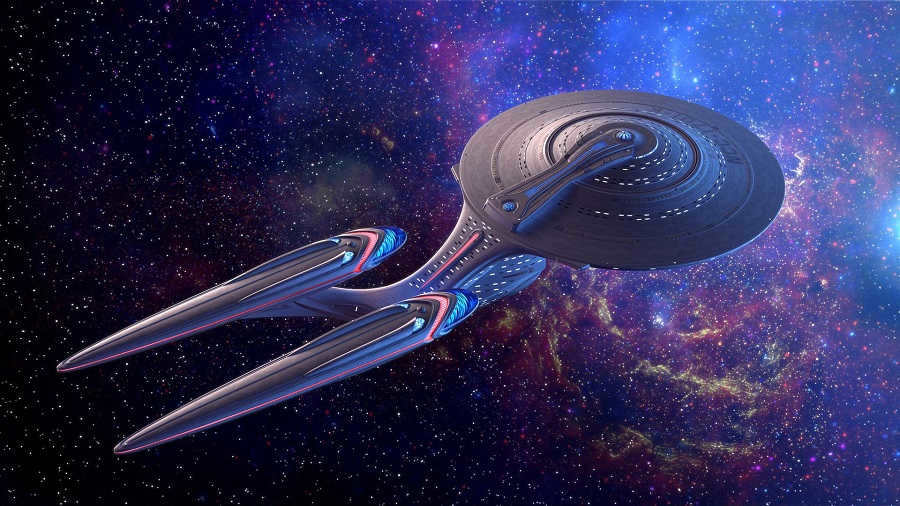
Up until the 1900s, people held firm beliefs in Isaac Newton’s theories on mass, motion, and gravity. It was a world that seemed simple and straightforward. However, everything changed in the early 20th century, when Albert Einstein came along.
Einstein’s theory of relativity revolutionized our understanding of mass and energy. His famous equation, which equates mass and energy, demonstrated that they are interchangeable – mass can be converted into energy and vice versa. He proposed that there is no universal reference frame; everything in the universe is relative, even time.
Therefore, it was deduced that the velocity of light remains unchanging and unaffected by the observer. Consequently, if an individual is traveling at half the velocity of light in the identical direction as the light itself, the light beam will exhibit itself in the same manner as it would to a person who is not in motion. In essence, the velocity of light remains constant and is not contingent on the observer’s state of motion.
Imagine if we were traveling near the speed of light!
If we were to travel at a velocity close to the speed of light, let’s say 90% of its maximum speed, then we would experience some fascinating phenomena.

When traveling at such a velocity, an individual will encounter time dilation. The passage of time will be slower for that individual compared to someone who is stationary.
Engaging in interstellar travel at relativistic speeds is akin to embarking on a journey through time.
Indeed, one can only proceed forward, into the future, as there is no way to reverse time – it is a unidirectional trajectory.

Traveling at 90% of the Speed of Light.
Imagine if you had the ability to journey to Mars and back at 90% of the speed of light. The total distance traveled would be approximately 450 million kilometers, and without any stops or instant acceleration, it would take about 16 minutes and 40 seconds to complete the round trip. However, there is a fascinating twist to consider.
From the perspective of observers on Earth, those 16 minutes and 40 seconds would pass as they watch your spacecraft travel to Mars. But for you, the space traveler, you would only experience 8 minutes and 20 seconds during the entire journey. This is due to the phenomenon known as time dilation, which occurs at high speeds.
Time dilation is a remarkable effect that happens when objects move at relativistic speeds. The faster you travel through space, the slower time moves for you.
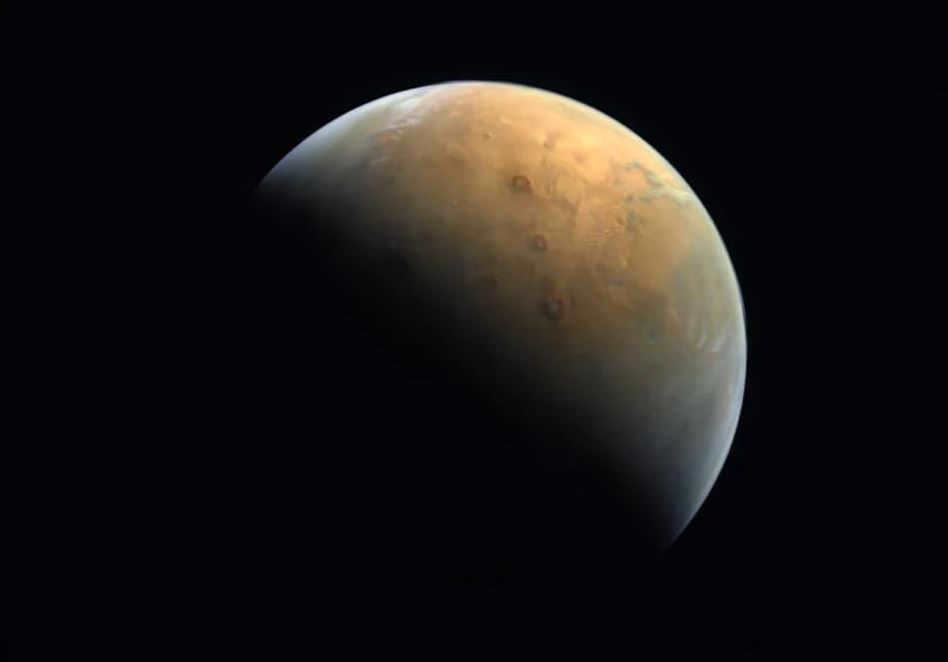
If a spaceship were to travel to Mars at a velocity of 90% the speed of light, people on Earth would experience the passage of 16.67 minutes, while those on the spaceship would only experience 8.33 minutes. This disparity in time would become even more pronounced at faster speeds, such as 99.99% of the speed of light.
Traveling at 99.99% of the Speed of Light
Imagine being able to travel at 99.99% of the speed of light. Now, let’s push the boundaries even further and venture beyond our solar system to Alpha Centauri, a distance of approximately 4.35 light years from Earth.
If you were to embark on a journey from Earth to Alpha Centauri and back, traveling at 99.99% of the speed of light with constant acceleration and without any breaks, it would take approximately 8 years and 8 months for observers on Earth to witness your incredible expedition.
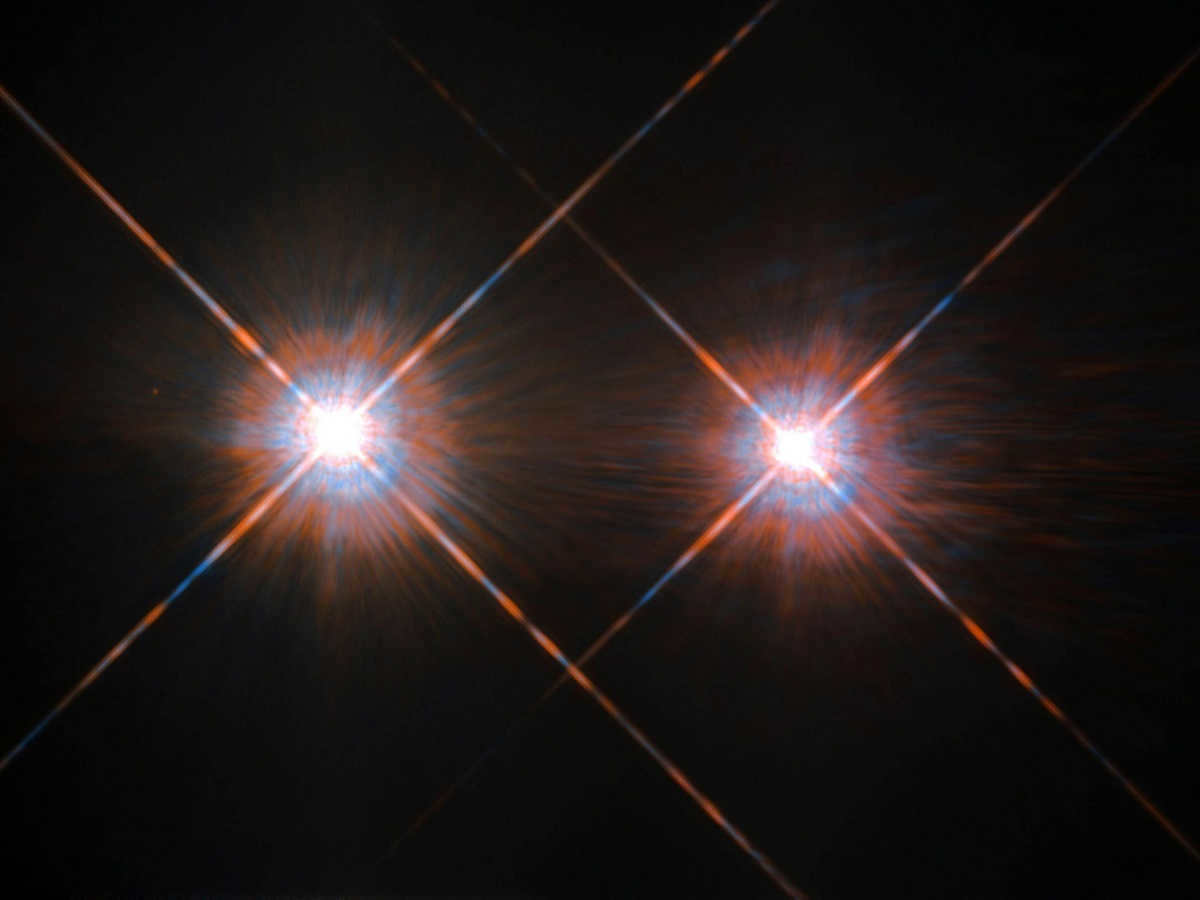
During this kind of journey, you would experience the passage of approximately 1.5 months. To put it another way, while your friends on Earth would have aged 8.7 years, you would have only aged a month and a half.
At a speed of 99.9999%
Let’s consider a scenario in which our spaceship is capable of accelerating to 99.9999% of the speed of light.
In that scenario, it would take space travelers 204 days to reach the TRAPPIST-1 planetary system, which is located 39.5 light years away from Earth.
This means that in just 6 months and 24 days, the astronauts would have covered a distance of 12.1 parsecs, which is quite remarkable. What’s even more remarkable is that their counterparts on Earth would have experienced almost 40 years of time passing. And that’s just for a one-way journey.
Imagine if we were headed towards the Orion Nebula as our final destination. The distance to reach this awe-inspiring nebula is about 1,500 light years, which is quite a significant distance even in the vastness of space. Assuming we are traveling at a mind-boggling speed of 99.9999% the speed of light, it would still take us approximately 21 years to reach the Orion Nebula in a spaceship.
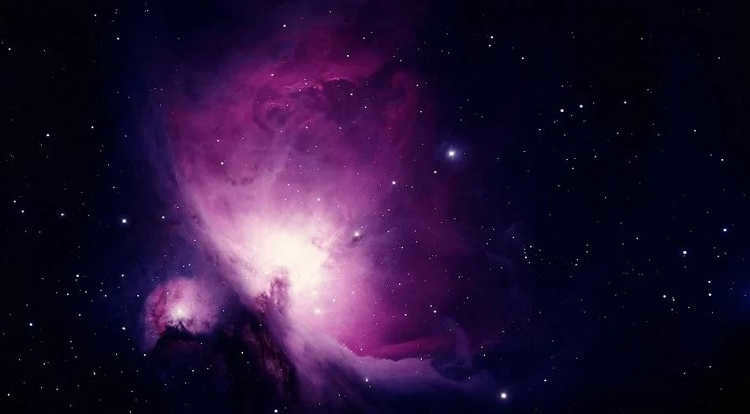
To accomplish this feat, it would be necessary to develop technology that could induce a state of suspended animation in the crew members. This is because spending such a long duration of time confined to the limited space of a spaceship would be highly challenging. Furthermore, it would be even more challenging to come to terms with the fact that while the crew is en route to Orion, 1500 years would have elapsed on Earth, and all the individuals they once knew would have long passed away.
Let’s now consider the scenario where the spacecraft’s destination is the very center of our Milky Way galaxy, a staggering 27,700 light years away from Earth. It is in this location that the supermassive black hole known as Sagittarius A* is situated.
Given our current velocity, it would take us approximately 143,000 days or 391 years to traverse such an immense distance. Unfortunately, this duration is far too extensive for the span of a human life. In this case, the solution would be to employ a generational ship, essentially an interstellar ark.
If we assume that each generation lasts 25 years, by the time the spaceship reaches its destination, there will be 16 generations of space travelers on board. These distant descendants of the initial Earth travelers will have successfully reached the center of the Milky Way. Meanwhile, back on Earth, nearly 28,000 years will have passed.
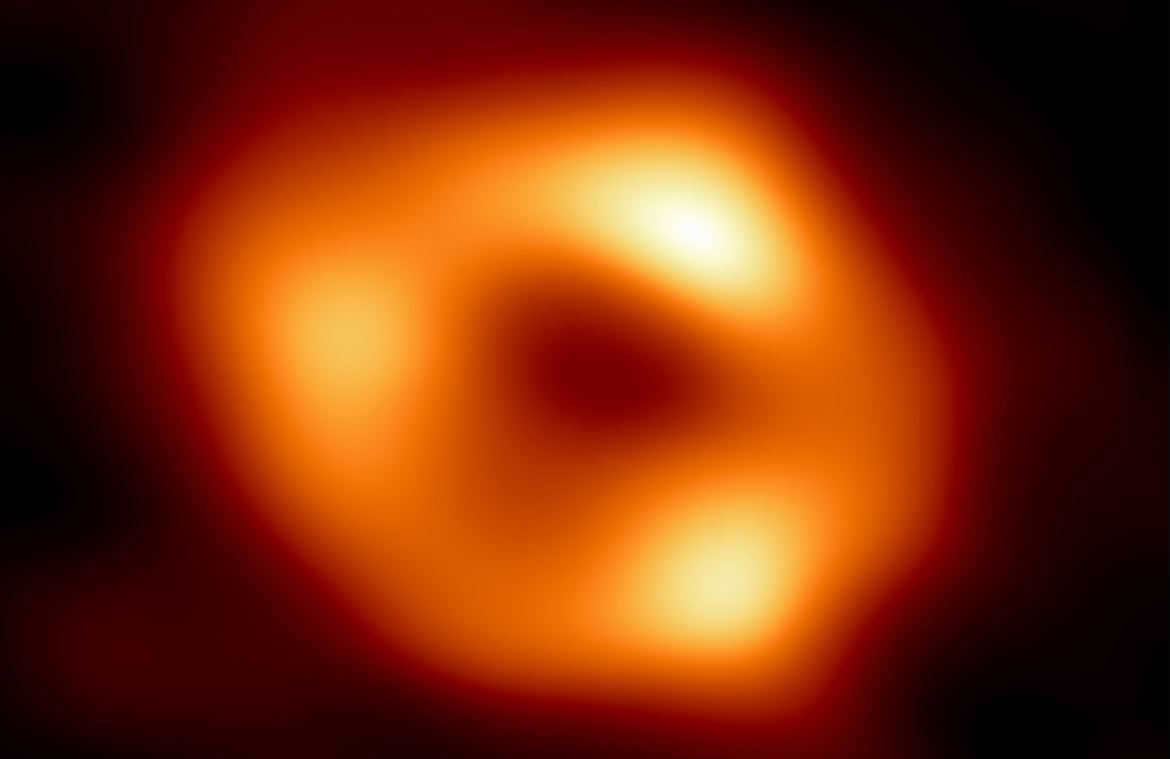
From the image, it is evident that traveling at 99.9999% of the speed of light would still take an unacceptably long time for a single human lifespan. However, there is room for improvement. Let’s consider a scenario where our speed reaches 99.9999991% of the speed of light, which is the velocity achieved by protons in the Large Hadron Collider (LHC).
Therefore, we are currently soaring towards the core of our Milky Way galaxy with the velocity of protons at the LHC.
In this particular scenario, we will traverse a distance of 27,700 light-years in a span of 37 years – a fairly reasonable amount of time. By maintaining this same pace, it would only take us two years to journey to the Orion Nebula and a mere 19 days to reach the TRAPPIST-1 system! Bravo. However, we will not halt our expedition there. Let us now ascertain our next objective, which happens to be the Andromeda Nebula galaxy.
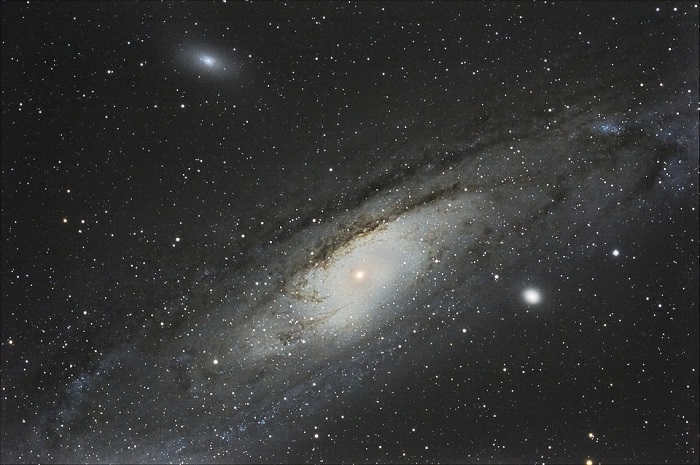
The Andromeda Nebula, the nearest large galaxy to the Milky Way, is currently approaching our galaxy. Its name derives from the constellation Andromeda, which is named after the princess who was married to Perseus in Greek mythology. The Milky Way is approximately 2.5 million light years away from Andromeda.
Traveling to the Andromeda Nebula at 99.9999991% of the speed of light would require 3,354 years in terms of ship time – a significantly lengthy duration that may not be suitable for adventurous intergalactic explorers.
However, what speed would be necessary to reach the Andromeda Nebula in a more practical timeframe, within the lifespan of the spaceship’s crew?

